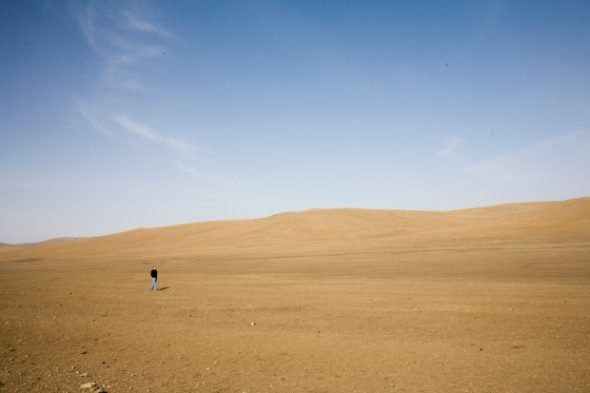One year after an earthquake and tsunami triggered nuclear disaster in Fukushima – and a nuclear rethink in Tokyo – a Japanese renewables advisory group has come up with a radical plan that would allow the country to import electricity from neighbouring countries.
The group is the Japan Renewable Energy Foundation (JREF) – a research outfit set up last year in the wake of the Fukushima disaster; and its radical proposal – which would require changes to Japanese law for it to be implemented – is the creation of an Asian “super-grid,” that would transport wind and solar energy from Mongolia to Japan.
In a vision not unlike Europe’s Desertec project – which aims to export solar power from the deserts of North Africa to the Mediterranean region – Recharge News reports that the JREF’s long-term goal is to connect the national grids of Japan, Mongolia, Russia, China and Korea, using high-voltage transmission lines that could send solar and wind power, generated in Mongolia, to power-hungry cities in Japan, Korea and China.
To help prove its concept, JREF has started work on a pilot project to transfer 1GW of electricity over about 250km, from Busan in South Korea to Kitakyushu in Japan – the organisation has signed a MoU with Mongolia’s National Renewable Energy Centre to collaborate on a study of the country’s renewable resources.
According to Recharge, it’s not yet clear if the electricity will come from renewable sources; although Shuta Mano, senior researcher for policy innovation at JREF, says South Korea has plans to build offshore wind farms. And the The Gobi Desert, which extends through much of southern Mongolia, is said to be the world’s third-largest potential source of solar energy. The region’s potential wind resource is nothing to be sneezed at either, with the US National Renewable Energy Laboratories (NREL) estimating Mongolia could support 1,100GW of installed wind power capacity.
But it may not be all about renewables, as recent reports have noted, Mongolia also has rich uranium reserves, and appears to be moving in the opposite direction to Japan on nuclear power, with plans to build its first plant.
Japan’s Mainichi News reported last month that Mongolian Prime Minister Sukhbaataryn Batbold called for a boost to economic cooperation with Japan in the area of nuclear energy, among others. “Japan possesses high technology in the peaceful use of nuclear power and has lessons from Fukushima,” he said.
Batbold also expressed a willingness to start negotiations with Japan on an economic partnership agreement, which is broader than a free trade agreement as it covers elimination of tariffs plus liberalization of investment, protection of intellectual property rights and free movement of labor.
Indeed, the JREF proposal would require Japan to open its electricity network to foreign suppliers, a key step in bringing power from countries further away. “It’s a completely new idea for Japan’s electricity system to connect with another country. If we can show that this is possible then we can continue to connect with other nations too,” Mano told Recharge.
JREF is also collaborating with the Desertec Foundation to share knowledge on the international transmission of renewable energy, says Recharge. “Ultra-high-voltage (UHV) transmission lines, running at 800kV or more, allow for large quantities of electricity to be transmitted down a single line. When the UHV power is in direct current (DC), it can go vast distances without losses.”
The group is hoping that projects like this, and similar ones internationally, will speed up restructuring of Japan’s electricity grid, helping to improve uptake of domestically-generated renewable energy. “If we have international discussions on importing electricity, this will bring pressure to change our electricity system. That is important,” says Mano.








